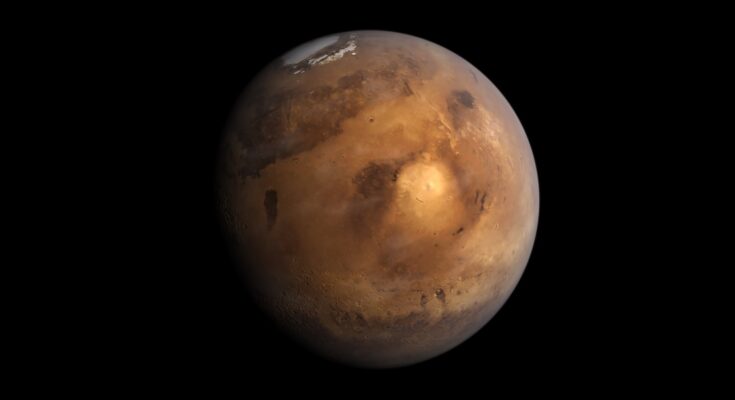New unprecedented images captured by the European Space Agency (ESA) show Mars’ watery past in all of its glory. The agency’s Mars Express orbiter showed the remains of Lake Eridania, which seems to have been larger than any existing lake on Earth.
In a statement, the ESA said it believes water once existed on the red planet. Lake Eridania is estimated to eclipse the size of the Caspian Sea, which is by far the largest lake on Earth.
But how did this massive body of water disappear from the face of Mars? It seems that the red planet lost its insulating atmosphere. This then also resulted in the eventual loss of its magnetic field, and a barrage of solar radiation followed.
Without its protective layer, the planet became a thousand times drier than the driest desert on Earth.
The Eredania Lake on Mars was enormous
Through analysis, the ESA concluded that the lake would have filled up some of Mars’ flattest regions. According to the organization’s estimates, this body of water would have held three times the current amount of water of the Caspian Sea.
The discovery of Lake Erdania on Mars has also shed new light on theories previously proposed by planetary scientists. Some experts believe Mars could have been host to primitive microbial life in its watery areas.
The area on Mars where this theory could be tested is the Jezero Crater. NASA’s Perseverance rover has recently drilled into a rock in the area and found organic molecules, which are the key components of life as we know it.
In a statement, NASA said:
“The rock exhibits chemical signatures and structures that could possibly have been formed by life billions of years ago when the area being explored by the rover contained running water.”
The space agency did warn that it is “too early” to jump to conclusions and much more research is needed.
Mars rock layers reminiscent of rocky features in American Southwest
When these lakes dried up from Mars’ surface, they left behind rock formations similar to those in Arizona in the United States. The rocks are quite important, given that they provide records of events from over 3.5 billion years ago.
Despite these discoveries, the reality is that many challenges remain for Martian exploration. NASA, the ESA, and other space agencies around the world have detected at least 500 ancient lakes on Mars.
Nonetheless, more than 70 percent of these ancient Martian lakes remain undetected. This is due to Mars’ history of significant erosion and volcanic activity which can erase and overwrite evidence of the ancient lakes on Mars.



